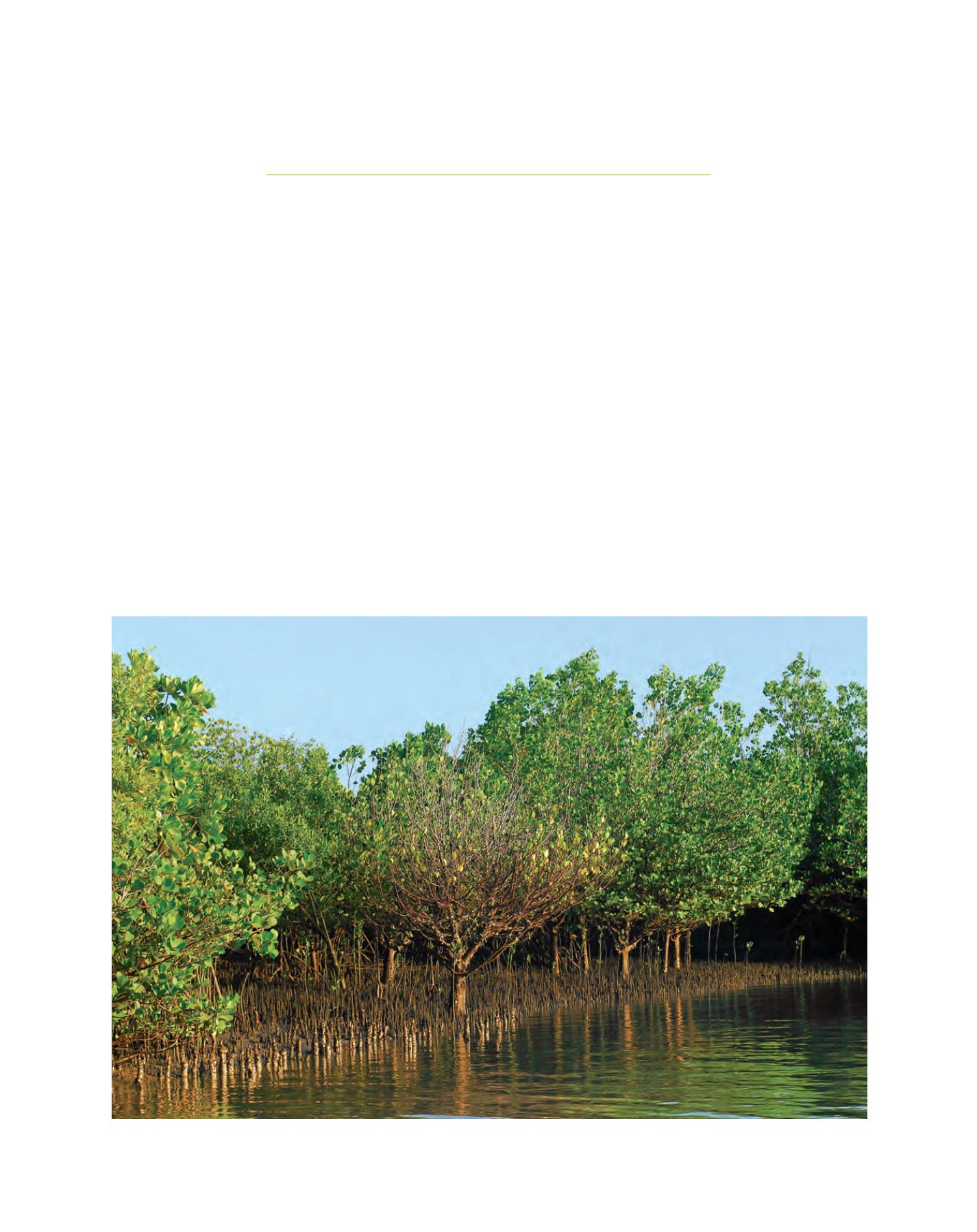

[
] 103
Forests in a green economy
Niklas Hagelberg, United Nations Environment Programme, Nairobi, Kenya
T
he contribution of forest ecosystems to socio-economic
development and human well-being – including
construction material, food, energy and cultural iden-
tity – is undeniable, but is often sidelined in development
decision-making. On the other hand, human behaviour and
economic development continue to have impacts upon the
quality and extent of forest cover, both positively and nega-
tively. Human expansion has partly caused the extensive
decline in forests, which today remain at almost half of their
original cover of 8,000 years ago. Additionally, most remain-
ing forests are disturbed, possess less biodiversity and have a
lower level of ecosystem functioning and resilience compared
to pristine natural forest.
1
Even though forests today still cover some 31 per cent of the global
land area, the reduction of forest cover continues, totalling approx-
imately 13 million hectares (ha) per year. Globally,
however, forest cover is recovering at a rate of about
5 million ha per year. This growth is attributable to
secondary forest being regenerated through reforesta-
tion, mainly in Asia.
2
Forest ecosystems have been recognized under the
three Rio conventions as both a source of climate change
and a solution to it, providing habitats for terrestrial
biodiversity and helping to combat land degrada-
tion and fight poverty in dry lands. These ecosystems
are even deeper at the heart of humanity when one
considers the 350 million humans (60 million of them
indigenous people) depending directly on them and the
cultural identity that many people have built around
forests. The contributions by the forest industry alone
are estimated at 1 per cent of global gross added value
Although forests cover almost one third of the Earth’s land area, they are declining at a rate of millions of hectares a year
Image: © 2011 UNEP/GRID-Arendal
















